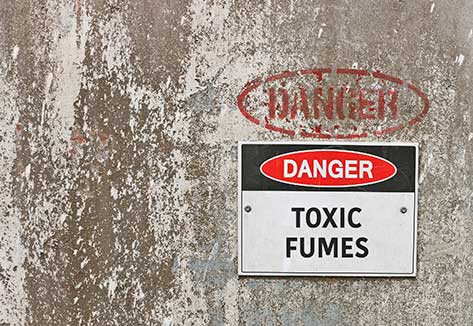We handle cases across the United States. Allen Stewart is licensed to practice law in Texas, California, New York, Pennsylvania, Missouri, North Carolina, Ohio and Arizona.
The History of Benzene Use
Benzene Exposure Attorney
Benzene is a usually colorless liquid with a tell-tale ‘sweet’ odor. When exposed to the air, it evaporates quickly and can build up in high concentrations. The U.S. Environmental Protection Agency recognizes benzene as a known human carcinogen. Despite knowledge of the health risks, benzene is still one of the 20 most commonly used chemicals in the United States today.

Given what we know about the toxicity of benzene, some of the early uses for this chemical are disturbing. For example, because of its sweet odor, benzene was used as an after-shave lotion in the late 19th and early 20th centuries. Around the turn of the 20th century, benzene was also used to decaffeinate coffee. Fortunately, that use was also abandoned.
Benzene has also long been recognized as an effective industrial solvent and degreaser, a use that remained quite popular for many decades. And with the rise of the automobile, benzene became a popular gasoline additive to increase octane ratings and reduce engine knocking. Benzene is still a component of gasoline, although the percentage of benzene is lower today that it was before 1950.
Benzene use in industrial settings increased significantly after World War I. As the use of benzene increased, problems became evident. Workers were getting sick. Some showed signs of acute benzene poisoning. Others experienced the effects of chronic benzene exposure.
Industry has known that benzene is dangerous to workers for a long time. In 1928, medical experts recognized a connection between benzene exposure and leukemia. In 1938, a study of benzene-exposed workers in the printing industry showed high levels of blood disease. And a 1948 study published by the American Petroleum Institute (API) showed that benzene can cause leukemia. The API study concluded that the only “safe” level of benzene exposure is no exposure at all. By about the end of World War II, the American Conference of Governmental and Industrial Hygienists were recommending limits on industrial exposure to the chemical, recognizing health risks associated with exposure.
Yet benzene has been widely used in a variety of industrial and even household products for decades, and is still being used today. Although the federal government banned the use of benzene in its pure form as a solvent over 20 years ago, benzene is still used in making solvents, degreasers, mineral spirits, plastics, rubber products, resins, glues, dyes, detergents, pesticides, chemicals such as styrene, and a host of other products. It remains a component of gasoline products, although the EPA has set rules limiting benzene content in gasoline.
Today, benzene is still found in small, but deadly quantities in most petroleum-based solvents. Unfortunately, companies that
make these petroleum solvents – such as mineral spirits, Stoddard solvent, toluene, and xylene – typically do NOT inform consumers or users that benzene is contained in the product.
Occupational exposure, both today and in the past, has put many American workers at risk for developing benzene-related diseases such as acute myelogenous leukemia, non-Hodgkin’s lymphoma, myelodysplastic syndrome and aplastic anemia. Because of the long latency period, many years may pass between the time a person was exposed to benzene and the time he or she develops disease. People who have worked as painters or mechanics or who have worked in the printing industry are particularly at risk.
